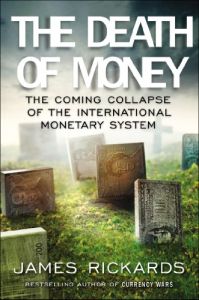Join getAbstract to access the summary!

Join getAbstract to access the summary!
James Rickards
The Death of Money
The Coming Collapse of the International Monetary System
Portfolio, 2014
What's inside?
The International Monetary Fund and China are poised to end the US dollar era. Is America just a crisis away from seeing that happen?
Recommendation
Portfolio manager James Rickards offers a comprehensive take on the American economy and its place in the world. The picture he paints, although not as tragic as his title suggests, will nonetheless make you fret. His pessimistic but compellingly written ideas about China question its development-miracle narrative, and his enthusiasm for gold places him to the right on some big questions. Critics may note that the dollar has had more staying power than its abuse should probably allow, but Rickards makes his points with conviction and research. The final section of his book is a brave attempt at making tangible predictions and giving investment advice that, unsurprisingly, supports his central themes. getAbstract, which is always neutral politically and which never gives investment advice, suggests Rickards’s treatise to investors who share his concerns over inflation, deflation and the staying power of the US dollar.
Summary
About the Author
James Rickards is a portfolio manager at West Shore Group and the author of the bestseller Currency Wars.


















Comment on this summary